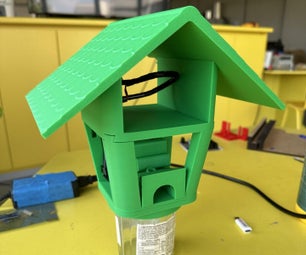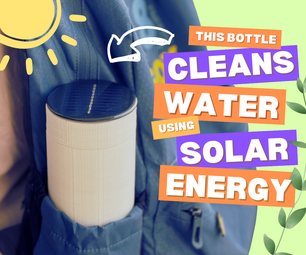Introduction: DIY Peristaltic Pump
In this project we will have a look at peristaltic pumps and find out whether it makes sense to DIY our own version of it or whether we should just stick with the commercial buy option instead. Along the way we will create a stepper motor driver circuit and a suitable 3D print for our DIY version.
Step 1: Watch the Video!
The video gives you all the information you need to create your own peristaltic pump. During the next steps I will present you some additional information.
Step 2: Order the Components!
Here you can find a parts list with example seller (affiliate links):
Ebay:
1x Arduino Nano: http://rover.ebay.com/rover/1/711-53200-19255-0/1?...
1x NEMA17 Stepper Motor: http://rover.ebay.com/rover/1/711-53200-19255-0/1?...
1x DRV8825 Stepper Motor Driver: http://rover.ebay.com/rover/1/711-53200-19255-0/1?...
1x 10kΩ Potentiometer: http://rover.ebay.com/rover/1/711-53200-19255-0/1?...
1x 100µF Capacitor: http://rover.ebay.com/rover/1/711-53200-19255-0/1?...
Aliexpress:
1x Arduino Nano: https://s.click.aliexpress.com/e/_dULoNXh
1x NEMA17 Stepper Motor: https://s.click.aliexpress.com/e/_dXs7VYF
1x DRV8825 Stepper Motor Driver: https://s.click.aliexpress.com/e/_dShHOO3
1x 10kΩ Potentiometer: https://s.click.aliexpress.com/e/_dX83GAF
1x 100µF Capacitor: https://s.click.aliexpress.com/e/_d7dOwRz
Amazon.de:
1x Arduino Nano: http://amzn.to/2HrK4kY
1x NEMA17 Stepper Motor: http://amzn.to/2odkI1m
1x DRV8825 Stepper Motor Driver: http://amzn.to/2Hsa3sE
1x 10kΩ Potentiometer: http://amzn.to/2oiVsXV
1x 100µF Capacitor: http://amzn.to/2FbDNcx
Step 3: Build the Circuit!
Here you can find the schematic and code for the circuit. Feel free to use them as a reference.
Attachments
Step 4: 3D Print the Pump!
As mentioned in the video, my design is basically a modification of an already existing design from Ralf. It is this one: https://www.thingiverse.com/thing:254956
Here you can download my 5 modified .stl files in order to 3D print them. Make sure to use ABS and an infill of 60%.
Step 5: Success!
You did it! You just built your own Peristaltic Pump!
Feel free to check out my YouTube channel for more awesome projects:
http://www.youtube.com/user/greatscottlab
You can also follow me on Facebook, Twitter and Google+ for news about upcoming projects and behind the scenes information:

















